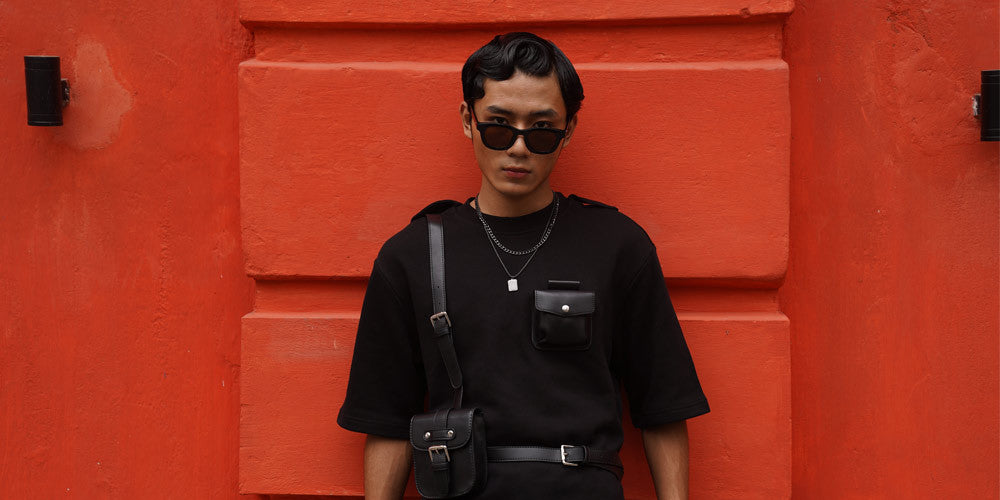No Products
RETURN TO SHOPThroughout history, the intricate relationship between clothing and art has woven a rich tapestry that reflects the evolution of societies, cultures, and individual expression. In this blog, I want to shed light on how clothing transcends its basic function of protection and modesty, serving as a canvas for artistic expression and a mirror reflecting the artistic, social, and political currents of its time.
The Ancient Threads
The journey begins in ancient civilizations, where clothing first emerged not just as a necessity but as a symbol of status, power, and beauty. The Egyptians, for instance, used linen to make their attire, but it was the intricate jewelry and head-dresses that truly expressed their artistic flair. Pharaohs and queens adorned themselves in elaborate garments, often detailed with gold and semi-precious stones, turning their attire into a masterpiece that declared their divine status.
Similarly, in ancient Greece, the simplicity of the chiton and the himation belied a deep appreciation for the human form, a central theme in Greek art. The fluid drapery of these garments accentuated the body in a way that sculptures of the era did as well, showcasing a harmony between textile and stone.
The Medieval Tapestry
In the medieval period, the link between clothing and art becomes even more pronounced. The Bayeux Tapestry, for example, is not just a historical document but a detailed account of the fashion of the time, telling stories through clothing. The vibrant colors, patterns, and styles illustrated in this tapestry provide insight into the materials and techniques used during the period, as well as the social hierarchies and roles within society.

The Renaissance Fabric
The Renaissance period marks a rebirth of classical art and a new focus on humanism, which was reflected in the clothing of the time. Artists like Botticelli and Michelangelo did not just create iconic works of art; they influenced fashion by depicting their subjects in flowing robes and intricate textiles, highlighting a renewed interest in beauty, proportion, and detail. This era also saw the rise of the fashion designer as an artist, with figures like Leonardo da Vinci designing elaborate costumes for the Milanese court.
Baroque and Rococo
The Baroque and Rococo periods took the artistry of clothing to new levels with their love for extravagance and detail. Clothing became a canvas for expression, with luxurious fabrics, bold patterns, and dramatic silhouettes - this is something I pride myself too at Explicit - where your clothing is your canvas.
The gowns of the time, seen in the portraits painted by artists like Peter Paul Rubens and François Boucher, depicted an unprecedented level of craftsmanship and artistry, incorporating lace, silk, and embroidery to create garments that were as much works of art as the paintings themselves. Today, we might see them and wonder, "Well, what's so special?"
What's special is that we are talking about the 16th century...

The Industrial Revolution
The Industrial Revolution in the 18th century, introduced new technologies that transformed clothing production and accessibility, but it also inspired a new form of artistic expression. The Arts and Crafts Movement, led by William Morris and others, rebelled against the soulless machine-made goods, advocating for the beauty and dignity of handcrafted textiles. This movement not only influenced fashion but also brought about a resurgence of traditional techniques and patterns, emphasizing the artistic value of clothing and its production.
The 20th Century
The 20th century saw fashion fully embrace its status as a form of art. Designers like Coco Chanel and Christian Dior were not just creating clothing; they were creating statements, challenging conventions, and reflecting the changing dynamics of society. The post-war era, in particular, saw a radical shift, with movements like Punk using clothing as a form of rebellion and commentary, transforming everyday garments into powerful expressions of identity and protest.
Contemporary Threads
Today, the fusion of clothing and art is more evident than ever. From the runway shows of Alexander McQueen (which also happens to be my favorite brand), which were as much art installations as fashion presentations, to the streetwear revolution led by brands like Supreme, clothing continues to be a medium for artistic expression, cultural dialogue, and social commentary.
The rise of sustainable fashion and the slow fashion movement further illustrates how clothing can convey important messages about environmentalism, ethics, and consciousness.
My aim at Explicit is the same - slow fashion, slow pollution, slow consumerism.
 Shipping Worldwide
Shipping Worldwide
 Help
Help










 My Orders
My Orders Return Information
Return Information Help
Help

